Related Research Articles
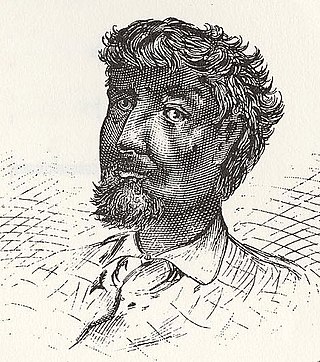
Jean Baptiste Point du Sable is regarded as the first permanent non-native settler of what would later become Chicago, Illinois. Recognized as the city's founder, the site where he settled near the mouth of the Chicago River around the 1780s is memorialized as a National Historic Landmark, now located in Pioneer Court.

The Battle of Fort Dearborn was an engagement between United States troops and Potawatomi Native Americans that occurred on August 15, 1812, near Fort Dearborn in what is now Chicago, Illinois. The battle, which occurred during the War of 1812, followed the evacuation of the fort as ordered by the commander of the United States Army of the Northwest, William Hull. The battle lasted about 15 minutes and resulted in a complete victory for the Native Americans. After the battle, Fort Dearborn was burned down. Some of the soldiers and settlers who had been taken captive were later ransomed.

Fort Dearborn was a United States fort, first built in 1803 beside the Chicago River, in what is now Chicago, Illinois. It was constructed by U.S. troops under Captain John Whistler and named in honor of Henry Dearborn, then United States Secretary of War. The original fort was destroyed following the Battle of Fort Dearborn during the War of 1812, and a replacement Fort Dearborn was constructed on the same site in 1816 and decommissioned by 1837.
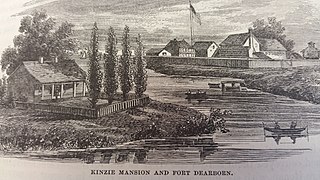
John Kinzie was a fur trader from Quebec who first operated in Detroit and what became the Northwest Territory of the United States. A partner of William Burnett from Canada, about 1802-1803 Kinzie moved with his wife and child to Chicago, where they were among the first permanent white non-indigenous settlers. Kinzie Street (400N) in Chicago is named for him. Their daughter Ellen Marion Kinzie, born in 1805, was not the first child of European descent born in the settlement because the first permanent non-indigenous settler, Jean Baptiste Pointe DuSable, was partially of European descent, specifically French from his father's side, while his mother was a descendant of Africa; his children, Jean Baptiste Pointe DuSable, Jr. and Suzanne, were born before her in 1776 and 1778, respectively.

Pierre Gaultier de Varennes, sieur de La Vérendrye was a French Canadian military officer, fur trader, and explorer. In the 1730s, he and his four sons explored the area west of Lake Superior and established trading posts there. They were part of a process that added Western Canada to the original New France territory that was centred along the Saint Lawrence basin.
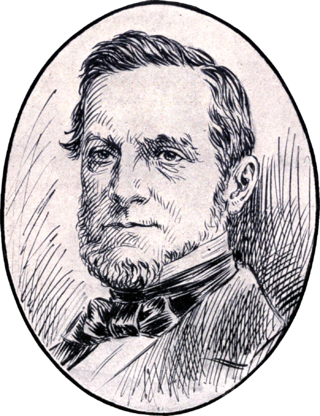
John Harris Kinzie was a prominent figure in Chicago politics during the 19th century. He served as the president of the Board of Trustees of Chicago when it was still a town and thrice unsuccessfully ran for Chicago's mayoralty once it was incorporated as a city.

Chicago and its suburbs is home to 35 Fortune 500 companies and is a transportation and distribution center. Manufacturing, printing, publishing, insurance, transportation, financial trading and services, and food processing also play major roles in the city's economy. The total economic output of Chicago in gross metropolitan product totaled US$770.7 billion in 2020, surpassing the total economic output of Switzerland and making Chicago's gross metropolitan product (GMP) the third largest in the United States, The city is home to several Fortune 500 companies, including Archer Daniels Midland, Conagra Brands, Exelon, JLL, Kraft Heinz, McDonald's, Mondelez International, Motorola Solutions, Sears, and United Airlines Holdings, although Chicago has experienced an exodus of large corporations since 2020, including Boeing; Citadel LLC; Caterpillar; and Tyson Foods. Three Fortune 500 companies left Chicago in 2022, leaving the city with 35, still second to New York City.

Juliette Augusta Magill Kinzie was an American historian, writer and pioneer of the American Midwest.

Fort Winnebago was a 19th-century fortification of the United States Army located on a hill overlooking the eastern end of the portage between the Fox and Wisconsin Rivers east of present-day Portage, Wisconsin. It was the middle one of three fortifications along the Fox-Wisconsin Waterway that also included Fort Howard in Green Bay, Wisconsin and Fort Crawford in Prairie du Chien, Wisconsin. Fort Winnebago was constructed in 1828 as part of an effort to maintain peace between white settlers and the region's Native American tribes following the Winnebago War of 1827. The fort's location was chosen not only because of its proximity to the site of Red Bird's surrender in the Winnebago War, but also because of the strategic importance of the portage on the Fox-Wisconsin Waterway, a heavily traveled connection between the Great Lakes and the Mississippi River. Fort Winnebago's location near the portage allowed it to regulate transportation between the lakes and the Mississippi.
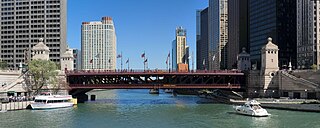
The DuSable Bridge is a bascule bridge that carries Michigan Avenue across the main stem of the Chicago River in downtown Chicago, Illinois, United States. The bridge was proposed in the early 20th century as part of a plan to link Grant Park (downtown) and Lincoln Park (uptown) with a grand boulevard. Construction of the bridge started in 1918, it opened to traffic in 1920, and decorative work was completed in 1928. The bridge provides passage for vehicles and pedestrians on two levels. An example of a fixed trunnion bascule bridge, it may be raised to allow tall ships and boats to pass underneath. The bridge is included in the Michigan–Wacker Historic District and has been designated as a Chicago Landmark.

Magdelaine La Framboise (1780–1846), born Marguerite-Magdelaine Marcot, was one of the most successful fur traders in the Northwest Territory of the United States, in the area of present-day western Michigan. Of mixed Odawa and French descent, she was fluent in the Odawa, French, English and Ojibwe languages of the region, and partnered with her husband. After he was murdered in 1806, she successfully managed her fur trade business for more than a decade, even against the competition of John Jacob Astor. After retiring from the trade, she built a fine home on Mackinac Island.

The Jean Baptiste Point Du Sable Homesite is the location where, around the 1780s, Jean Baptiste Point du Sable located his home and extensive trading post. This home is generally considered to be the first permanent, non-native, residence in Chicago, Illinois. The site of Point du Sable's home is now partially occupied by and commemorated in Pioneer Court at 401 N. Michigan Avenue in the Near North Side community area of Chicago, Illinois.
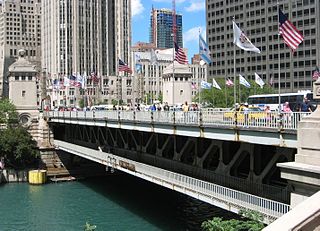
Pioneer Court is a plaza located near the junction of the Chicago River and Upper Michigan Avenue in Chicago's Magnificent Mile. It is believed to be the site of Jean Baptiste Point du Sable's original residence and trading post. In 1965, the plaza was built on the former site of his homestead as part of the construction of the Equitable Life Assurance Society of America building. The Jean Baptiste Point Du Sable Homesite was designated as a National Historic Landmark on May 11, 1976. John Kinzie, a prominent early settler, bought and expanded Point du Sable's post in 1800. The Plaza is bounded on the north by the Tribune Tower, on the east by 401 N. Michigan Avenue, on the south by the Chicago River, and on the west by Michigan Avenue, adjacent to the DuSable Bridge. In 2017, a newly designed Apple Inc. store was opened on the south side of the court, which created new levels linking down to the river.
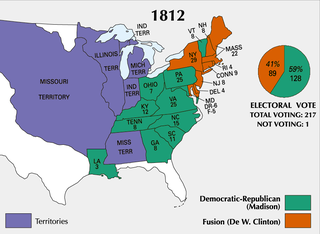
The following is a partial list of events from the year 1812 in the United States. After years of increasing tensions, the United States declares war on the British Empire, starting the War of 1812.

401 North Michigan is a 35-story skyscraper in the Streeterville area of Chicago, built in 1965 at 401 North Michigan Avenue, along the north bank of the Chicago River. It was designed by Bruce Graham and Natalie de Blois in the international style. Along with the Tribune Tower and Wrigley Building, it forms the southern gateway to Chicago's famous Magnificent Mile. The building was built atop the site of a cabin belonging to Chicago's first permanent resident, Jean Baptiste Pointe du Sable. In reference to du Sable, the large plaza adjacent to the building has been named Pioneer Court.
Antoine Ouilmette was a fur trader and early resident of what is now Chicago, Illinois. He was of French Canadian and possibly Native American ancestry. The village of Wilmette, Illinois is named in his honor.

Jean Baptiste Beaubien, a multi-lingual fur-trader born in Detroit, Michigan, became an early resident of what became Chicago, Illinois, as well as an early civic and militia leader in Cook County, Illinois during the Black Hawk War, before moving to Du Page County, Illinois in his final years.

Alexander Robinson, was a British-Ottawa chief born on Mackinac Island who became a fur trader and ultimately settled near what later became Chicago. Multilingual in Odawa, Potawatomi, Ojibwa, English and French, Robinson also helped evacuate survivors of the Fort Dearborn Massacre in 1812. In 1816, Robinson was a translator for native peoples during the Treaty of St. Louis. He became a Potawatomi chief in 1829 and in that year and in 1833, he and fellow Metis Billy Caldwell negotiated treaties on behalf of the United Nations of Ottawa, Chippewa, and Potawatomi with the United States. Although Robinson helped lead Native Americans across the Mississippi River in 1835, unlike Caldwell, Robinson returned to the Chicago area by 1840 and lived as a respected citizen in western Cook County until his death decades later.
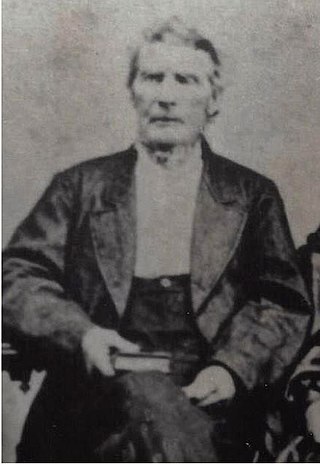
James Thompson was an American surveyor who created the first plat of Chicago. Born in South Carolina, Thompson moved to Kaskaskia in southern Illinois as a young man and lived in the area for the rest of his life, working primarily as a surveyor. He was hired to plat settlements at the ends of the proposed Illinois and Michigan Canal in northern Illinois; he completed the plat of Chicago, the settlement at the eastern end, on August 4, 1830. After completing his survey of Chicago he returned to the Kaskaskia area and declined an offer of land in Chicago in favor of a cash payment. In addition to his surveying work, he served in various positions such as probate judge, county commissioner, and officer in the Illinois militia during the Black Hawk War.
References
- ↑ Jean DuSable:Father of Chicago by Lawrence Cortesi
- 1 2 3 "Chicago's First Murder". Chicago Daily Tribune . November 27, 1942. p. 10. Retrieved November 12, 2021– via Newspapers.com.
- ↑ "Historic Paper Will Be Filed in City Today". Chicago Daily Tribune . August 26, 1954. p. 10. Retrieved November 12, 2021– via Newspapers.com.
- ↑ Pierce, Bessie Louise (1937). A History of Chicago, Vol. I: The Beginning of a City 1673-1848. Chicago: University of Chicago Press. p. 21.
- ↑ Ohio State Historical Society (1959). "Document Transcriptions of the War of 1812 in the Northwest, Vol. VI".
- ↑ Ohio State Historical Society (1959). "Document Transcriptions of the War of 1812 in the Northwest, Vol. VI".
- ↑ Dailing, Paul (October 18, 2018). "The long death of Jean Lalime: A classic tale of Chicago corruption, and also of rabbinical law, frontier justice, and the city's first murder". The Chicago Reader .
- ↑ Kinzie, Juliette (1844). "Narrative of the Massacre at Chicago [Saturday], August 15, 1812, and of Some Preceding Events" (PDF).
- ↑ Andreas, A.T. (1884). "History of Chicago from the Earliest Period to the Present Time, Vol. 1".
- ↑ "To Show its Riches". Chicago Daily Tribune . November 1, 1896. pp. 41, 42 . Retrieved November 12, 2021– via Newspapers.com.
- "History of Jean-Baptiste Pointe DuSable," DuSable Heritage Association, on line.